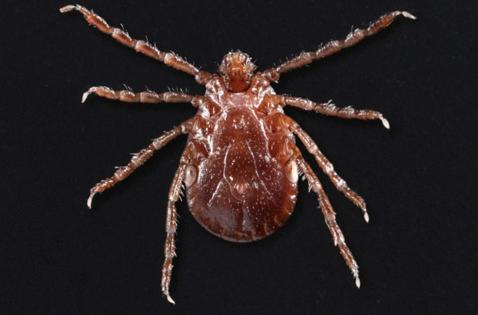Emerging tick species in CT found to carry rare bacteria that can be deadly, officials say
Published in News & Features
HARTFORD, Conn. — An invasive tick species in Connecticut has been found to carry the bacteria that can cause ehrlichiosis in humans, a discovery that has alarmed state biologists as the tick continues to increase its spread throughout the state.
Longhorned ticks, an emerging invasive species in the state, have now been found to carry the bacteria that causes ehrlichiosis. The bacteria, while rare in Connecticut, has been found in the state for a while, according to Dr. Goudarz Molaei, a state entomologist with the Connecticut Agriculture Experiment Station.
Between 2001 and 2019, the number of cases of the bacteria increased from 142 to 2,093, a roughly 15-fold rise. Only two erlichiosis cases were recorded in Connecticut between 2008 and 2018, however, 28 cases were reported in the state between 2019 and 2023, according to CAES data.
“This is concerning because before we only saw this bacteria present in the lone star tick, this is the first case detected in the longhorned tick,” Molaei said. “What is concerning about this is that the longhorned tick doesn’t need a mate to reproduce. So it has the potential to spread quickly and we already are seeing that as its population increases.”
Longhorned ticks primarily reproduce through a process called parthenogenesis, where females can lay viable eggs without mating to reproduce. This means a single female tick can create an entire population without a male partner, increasing the risks of rapid spread, Molaei said.
“This is very unusual and something we don’t see too often,” Molaei said. “So far this is the only tick in the United States that has this ability to reproduce without a mate. In other animals like arthropods and certain vertebrae, parthenogenesis has been reported, but it’s still very rare.”
Molaei said that a rise in ehrlichiosis cases is expected in the future. The bacterial infection can be a serious illness, though most cases are not fatal with prompt treatment. Untreated, it can lead to severe complications like organ damage, brain problems and even death. There is no vaccine available, but antibiotics are the traditional course of treatment, he said.
The invasive ticks are not native to the United States and are considered an exotic species. They originally were found in tropical environments in Asia before being detected in the U.S. in 2017. Since its initial discovery, the longhorned tick has expanded into at least 21 states, primarily in the East and Northeast, as well as the District of Columbia, according to CAES. The species was first detected in Connecticut in 2018.
In both its native and invasive range, the longhorned tick is known to transmit a wide variety of pathogens, Molaei said. Researchers have found evidence of infection in field-collected specimens in the U.S. with pathogens that cause Lyme disease, anaplasmosis, babesiosis, Bourbon virus disease and theileriosis. However, it is still unknown if the tick can spread many of these disease agents.
“What is also unusual about this species is that we have shown this tick is capable of attaching and detaching with partial blood feeding,” Molaei said. “Most ticks will stay on a host until they are fully engorged, so this increases the risks of disease transmission. Unfortunately these ticks co-exist with lone star ticks, and to make the matter worse, both of these ticks feed on white tail deer. Deer can act as a reservoir for the bacteria that causes ehrlichiosis. Longhorned ticks can pick up the bacteria after feeding on an infected deer.”
The tick species is now found scattered throughout Fairfield and New Haven counties, according Molaei. However, their range is expected to increase its range further northward. Last year, the ticks were identified in Fairfield, New London, Middlesex and New Haven counties, according to data from CAES.
“As the climate changes, we expect to see this species further north into New England and Canada,” Molaei said. “We are fortunate that. at least for the time being, the population is rather patchy in Fairfield and New Haven counties. It is not widespread yet, but eventually it will become more widespread, and that is where the concern increases.”
©2025 Hartford Courant. Visit at courant.com. Distributed by Tribune Content Agency, LLC.







Comments